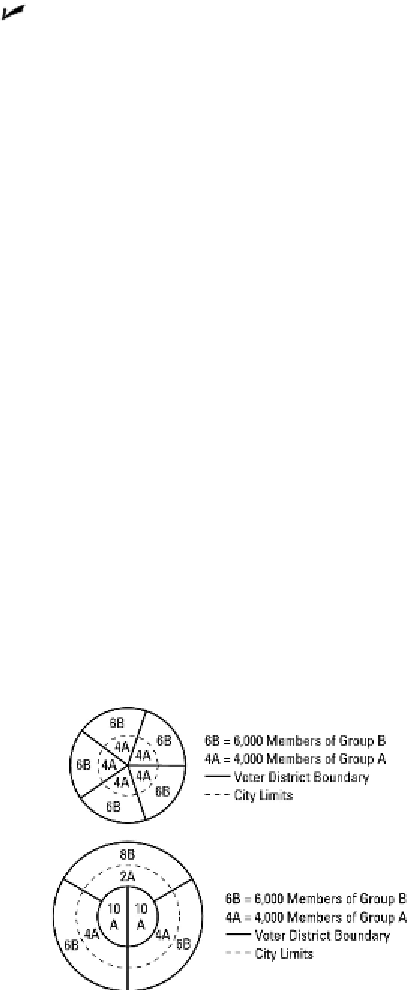Geography Reference
In-Depth Information
Theareainquestionistobedividedinto5politicaldistricts,eachofwhichcontains10,000
people.
“Diluting” a voting bloc
In Figure 14-8a, Group A consists of 20,000 people and Group B 30,000. Because Group A accounts
for two-fifths (40 percent) of the voters, you may expect them to capture two-fifths of the seats being
contested. That is, they may win two of the five seats. But they can quite possibly get nothing. In Fig-
ure 14-8a, members of Group A have been spread out over the five districts such that they are in the
minority in every instance. In a manner of speaking, their voting power has been “diluted.” Assuming
voters vote solely along party lines, the results will be 5-0 in favor of Group B.
“Packing” a voting bloc
In Figure 14-8b, Group A consists of 30,000 people and Group B 20,000. Because Group A now ac-
counts for three-fifths (60 percent) of the voters, you may expect a totally different electoral outcome.
But there is a way to draw the district boundaries that ensures political dominance for Group B. And
because these are the people who are drawing the lines, you can bet they will do it. In the diagram,
two inner-city districts consist entirely of members of Group A. But by “packing” so many members
of Group A into these two districts, the result is that they are in the minority in the other three. As-
suming once more that voters vote solely along party lines, the results will be 3-2 in favor of Group
B. Stated differently, the bloc that consists of two-fifths of the voters will control three-fifths of the
seats.
Figure 14-8 a
and b:
These
diagrams show
two kinds of ger-
rymandering: di-
luting and pack-
ing.



